

"Hip Hop it started out in the park, we use to do it out in the dark" and you know the rest. It was all about the music, captivating the crowd and audience with your sound systems, bombing and tagging at the lay ups and rackin up spray paint, markers and black books, b-boys break dancing with wind breakers with straight leg pants rock steady style on linoleum, dj's spinning records at block parties making spectators go into a frenzy, the club scene was hot and mc's battled daily for respect and rulership seeking to own the lyrical throne. Melle Mel changed the game and raised the bar on lyricism with the release of "The Message". And amongst all of these elements that collectively branched together a unison called Hip Hop, a fifth element would surface subtlely while co-existing silently and it's apart of us all and that element is fashion.
I remember the phase of the V bomber leather, sheep skin coats with the hat and gloves to match. Snorkles with the ski hat was catchy. The cazal frames without the lenses was ill. Ocean Pacific and Osh Kosh B Gosh was big in the hood. Hockey jerseys were sporty and Wallabees and British Walkers, and Bally's were some of the greatest foot wear rocked in the hood.

Wearing jewelry also became fashionable in the New York City. Just like the way you see today, how everybody is on this bling bling, iced out trip – well it was a time when "gold" was just like "ice" is today. There were artist who would wear loads of chains around their necks and rings on each finger. They were'nt blinging, but they were considered to be "heavy" which is a similar term as bling bling as far as slang termonology goes. And with the jewelry of course these individuals were about fashion as well. But as far as the jewelry go and styles, we rocked; cable rope chains, gucci links, heron bone chains, high riser rings, four finger rings, two finger rings and fronts also known as Gold Teeth. It was reality as well. See when we would see people like Biz Markie, Kool G Rap, Big Daddy Kane and Slick Rick in the public "heavy" it wasn't that far fetched for us. Being heavy and wearing excessive amounts of jewelry was something that we also did in our own neighborhoods. So even though there were these Rappers flossing, we did the same thing in our neighborhoods they were doing. They just did it for a wider audience. Even though we were pure hip hop fans coming up, I know a lot of them was shocked that we possessed a lot of or even more of what they had. With wearing that much jewelry or any jewelry for that matter was dangerous. So even to do it you had to have had a reputation already. You were well known in the ghetto and in the streets and people respected you. Street credibility and reputation is really all you really have. When you really think about it, everything that we do in life stems from our reputations. From getting a job to how someone treats you. It's all based on your reputation and your self projection to the world. Run DMC and Jam Master Jay, really helped bring the jewelry craze and fascination to mainstream America. The same way they were responsible for putting a different spin to Hip Hop as far as fashion is concerned. With the black hats, leather jackets, shell toe Addidas without shoe strings and the big gold rope chains was trend setting. They had so much appeal and influence that Addidas would soon grant them an endorsement deal. Dapper Dan was a big hit uptown in Harlem as well. Designing different styles and prototypes from major designers adding a unqiue street flavor to it. I would see a lot of different people rocking those Dapper Dan designs especially on 42nd Street and Times Square. Wearing designs by Dapper Dan made you feel hood rich.


Footwear is also seen as a must have in the hood. Back then it was Spot Bilts, Saucony's, Lotto's, Ellesse, Converse, Puma, Addidas, Gucci, New Balance, Bally's, Stan Smiths and even Troop. Always having a fresh pair of kicks became essential to the image. Besides, it should be that way. Fashion sort of was divided in New York City at one time though. I say this because when I think of Ex-Clan and The Jungle Brothers and Public Enemy, they contributed to the culture fashionably, but they did it on a different scale. For instance, Ex-Clan sported african medallions, beads and flaunted social messages in their lyrics raising ones consciousness.Their look was truly motherland inspired. Then The Jungle Brothers had a real safari banana republic type of look that was happening. But Public Enemy, they were really organized. With Chuck D's powerful and attention grabbing voice and Flava Flav as hype man, wearing the clock around his neck was real catchy. It took off so fast, that people really began wearing the clock similar to Flav around their necks. In the hood we called them the Stop Watch. And with the S1W's with the ozzy machine guns with the all black army vetiege suits was straight eye candy. Then on the other hand, there were artist who represented what I call "hood wear" like baggy jeans, hoody sweat shirts, sneakers, boots which also had an impact on the people. That's what you call influence. Because people followed what a lot of Hip Hop groups were doing even under the current state of hiphop. To capitalize on the billions of dollars flushed into fashion by urban America, Tommy Hilfiger began hiring Rappers to be models in his advertising campaigns. Grand Puba was sort of like the poster boy for Hilfiger at that time. Ralph Lauren even showed interest in working with the fashion b-boys "Lo-Lifes" who continue to set fashion trends while Tyson Beckford became an offcial Polo model. And of course we can't forget LL Cool Jay with Troop back in days.
When I refer to fashion, I'm talking about the many things that make ones appearance bigger than life. Whether it's clothing, jewelry, footwear, hairstyles, cars or whatever, it's something that catapults ones image and reputation. It's like when you have a glow to you and your unique, stylish and the different attractions you receive are plentiful from all angles. Females, money, jealousy, envy, lust, success and a bunch of unwarranted problems. Like The Notorious BIG quoted "More Money, More Problems". And that's what being fashionable and fly created sometimes, problems. Since people constantly see "eye candy" which is your image, they associate that to money. This is so prevalent in urban America. Fashion, being dipped, jigged out, flossing, flaming and being at the top of your game is vital. In the hood, being fashionable is also immediately related to success and wealth. When your seen in the public constantly and you always seem to have the finer things in life people automatically assume or judge your circumstances. And that breeds envy and jealousy. For some reason, that's just the way the ball bounce. It's also a attitude, energy and a mentality that being fashionable fit is the shit. In urban America everybody wants to be put on a higher pedistol as far as their access to finances and having what others dreamed about. So in the ghettos of America, the lust for materialism has plaqued us for decades.
I remember the phase of the V bomber leather, sheep skin coats with the hat and gloves to match. Snorkles with the ski hat was catchy. The cazal frames without the lenses was ill. Ocean Pacific and Osh Kosh B Gosh was big in the hood. Hockey jerseys were sporty and Wallabees and British Walkers, and Bally's were some of the greatest foot wear rocked in the hood.
Along side Polo was Guess, Georges Marciano then later came Helly Hansen and others. Guess Jumpers was the shit and not to many people had them. Guess farmers was one of my favorites.
The very first real fashion statement that I recollect of myself would have to be 1984 Easter Sunday. My moms had always managed to get us all outfits once Easter Sunday came around. So on this particular Easter Sunday, she decided to dress me and my brother up alike sort of like twins. So once it was time to get dressed, I sported the red and white suede Pumas and fat laces with the blue Lee jeans with a red sweat shirt to match the Pumas. And I topped it off with the tight ceasar like haircut. And my brother wore the blue and white Pumas with a blue top and Lee jeans and all. When we stepped outside to take pictures, it was one of greatest feelings in the world. People just surrounded us and the compliments ran high. We had people mesmerized, just by the way we looked and presented ourselves. What was interesting was the way in which we coordinated our outfits maximizing it's full impact and setting trends. It was truly a riveting situation. On that day, I had had my first taste of fashion and it's something that has stuck with me up to this day. And one thing I do know is that it's not always how expensive you shop, it's how you coordinate your attire that makes you stand out.
The very first real fashion statement that I recollect of myself would have to be 1984 Easter Sunday. My moms had always managed to get us all outfits once Easter Sunday came around. So on this particular Easter Sunday, she decided to dress me and my brother up alike sort of like twins. So once it was time to get dressed, I sported the red and white suede Pumas and fat laces with the blue Lee jeans with a red sweat shirt to match the Pumas. And I topped it off with the tight ceasar like haircut. And my brother wore the blue and white Pumas with a blue top and Lee jeans and all. When we stepped outside to take pictures, it was one of greatest feelings in the world. People just surrounded us and the compliments ran high. We had people mesmerized, just by the way we looked and presented ourselves. What was interesting was the way in which we coordinated our outfits maximizing it's full impact and setting trends. It was truly a riveting situation. On that day, I had had my first taste of fashion and it's something that has stuck with me up to this day. And one thing I do know is that it's not always how expensive you shop, it's how you coordinate your attire that makes you stand out.
Growing up in Brooklyn, New York during the golden age of hip hop, fashion had taken on a life of it's own. I mean even the music industry was making huge statements in fashion, especially in Hip Hop. But it has always been here as innovators of the first decade like Africa Bambatta, Treacherous 3, Grandmaster Flash and The Furious Five, Cold Crush Bros and a host of other pioneers ushered in new styles and made fashion a main ingredient in their performances. It's just something that puts you in a class by yourself when done right. Then came ground breaking artist like Eric B & Rakim, Big Daddy Kane, Slick Rick, Dana Dane, Run DMC, Naughty By Nature , NWA and countless others who all continued their fashion agendas in the global Hip Hop arena making it all relevant.


Wearing jewelry also became fashionable in the New York City. Just like the way you see today, how everybody is on this bling bling, iced out trip – well it was a time when "gold" was just like "ice" is today. There were artist who would wear loads of chains around their necks and rings on each finger. They were'nt blinging, but they were considered to be "heavy" which is a similar term as bling bling as far as slang termonology goes. And with the jewelry of course these individuals were about fashion as well. But as far as the jewelry go and styles, we rocked; cable rope chains, gucci links, heron bone chains, high riser rings, four finger rings, two finger rings and fronts also known as Gold Teeth. It was reality as well. See when we would see people like Biz Markie, Kool G Rap, Big Daddy Kane and Slick Rick in the public "heavy" it wasn't that far fetched for us. Being heavy and wearing excessive amounts of jewelry was something that we also did in our own neighborhoods. So even though there were these Rappers flossing, we did the same thing in our neighborhoods they were doing. They just did it for a wider audience. Even though we were pure hip hop fans coming up, I know a lot of them was shocked that we possessed a lot of or even more of what they had. With wearing that much jewelry or any jewelry for that matter was dangerous. So even to do it you had to have had a reputation already. You were well known in the ghetto and in the streets and people respected you. Street credibility and reputation is really all you really have. When you really think about it, everything that we do in life stems from our reputations. From getting a job to how someone treats you. It's all based on your reputation and your self projection to the world. Run DMC and Jam Master Jay, really helped bring the jewelry craze and fascination to mainstream America. The same way they were responsible for putting a different spin to Hip Hop as far as fashion is concerned. With the black hats, leather jackets, shell toe Addidas without shoe strings and the big gold rope chains was trend setting. They had so much appeal and influence that Addidas would soon grant them an endorsement deal. Dapper Dan was a big hit uptown in Harlem as well. Designing different styles and prototypes from major designers adding a unqiue street flavor to it. I would see a lot of different people rocking those Dapper Dan designs especially on 42nd Street and Times Square. Wearing designs by Dapper Dan made you feel hood rich.


Footwear is also seen as a must have in the hood. Back then it was Spot Bilts, Saucony's, Lotto's, Ellesse, Converse, Puma, Addidas, Gucci, New Balance, Bally's, Stan Smiths and even Troop. Always having a fresh pair of kicks became essential to the image. Besides, it should be that way. Fashion sort of was divided in New York City at one time though. I say this because when I think of Ex-Clan and The Jungle Brothers and Public Enemy, they contributed to the culture fashionably, but they did it on a different scale. For instance, Ex-Clan sported african medallions, beads and flaunted social messages in their lyrics raising ones consciousness.Their look was truly motherland inspired. Then The Jungle Brothers had a real safari banana republic type of look that was happening. But Public Enemy, they were really organized. With Chuck D's powerful and attention grabbing voice and Flava Flav as hype man, wearing the clock around his neck was real catchy. It took off so fast, that people really began wearing the clock similar to Flav around their necks. In the hood we called them the Stop Watch. And with the S1W's with the ozzy machine guns with the all black army vetiege suits was straight eye candy. Then on the other hand, there were artist who represented what I call "hood wear" like baggy jeans, hoody sweat shirts, sneakers, boots which also had an impact on the people. That's what you call influence. Because people followed what a lot of Hip Hop groups were doing even under the current state of hiphop. To capitalize on the billions of dollars flushed into fashion by urban America, Tommy Hilfiger began hiring Rappers to be models in his advertising campaigns. Grand Puba was sort of like the poster boy for Hilfiger at that time. Ralph Lauren even showed interest in working with the fashion b-boys "Lo-Lifes" who continue to set fashion trends while Tyson Beckford became an offcial Polo model. And of course we can't forget LL Cool Jay with Troop back in days.
When I refer to fashion, I'm talking about the many things that make ones appearance bigger than life. Whether it's clothing, jewelry, footwear, hairstyles, cars or whatever, it's something that catapults ones image and reputation. It's like when you have a glow to you and your unique, stylish and the different attractions you receive are plentiful from all angles. Females, money, jealousy, envy, lust, success and a bunch of unwarranted problems. Like The Notorious BIG quoted "More Money, More Problems". And that's what being fashionable and fly created sometimes, problems. Since people constantly see "eye candy" which is your image, they associate that to money. This is so prevalent in urban America. Fashion, being dipped, jigged out, flossing, flaming and being at the top of your game is vital. In the hood, being fashionable is also immediately related to success and wealth. When your seen in the public constantly and you always seem to have the finer things in life people automatically assume or judge your circumstances. And that breeds envy and jealousy. For some reason, that's just the way the ball bounce. It's also a attitude, energy and a mentality that being fashionable fit is the shit. In urban America everybody wants to be put on a higher pedistol as far as their access to finances and having what others dreamed about. So in the ghettos of America, the lust for materialism has plaqued us for decades.
To get fly kids would save up money for weeks and months or depend on their parents for such rewards. Others worked nine to five jobs or engaged in some type of other street hustle to get dip. And honestly, most people couldn't keep up. Besides, the cost was expensive and it was hard times for many. People just couldn't afford it. I guess their budgets wouldn't allow it. It was driving them nuts to a point where devilish deeds were employed to satisfy their thirst to get fly. But there were other fashion revolutionaries in the late eighties (80's) to mid nineties (90's) like the legendary "Lo-Lifes" who raised the stakes in fashion and made a tremendous impact and became Hip Hop fashion phenoms. Major designers on Fifth Avenue were given free advertisement as these Brooklyn fashion B-Boys would expose their labels to the public non stop. These kids were like "walking bill boards" or commercials all for the love of fashion. And with their large influence in the streets, this phenomenon and trend would spread like wild fire globally. And getting their hands on these expensive name brand items was no problem for them. It came with ease by mastering the "strong arm shopping trade". Besides, nobody really cared about how you got all of your possessions just as long as you had them. As far as what the "Lo-Lifes" did for fashion it's evident as they have created a cult type following.They became so influential from a fashion stand point and survival and they have always been apart of Hip Hop and Street Life. Being fly and getting all the attention, being the main attraction in the pubics eye is like a rush, having wears in loads and being fashionbly fit. When I think back to the days of when Hip Hop was just Born and on the rise, I noticed that fashion was always apart of the agendas. B-Boys (break dancers) would coordinate outfits for their battles just like they did with their dance techniques. Mc's and groups projected fashion statements loudly. Dj's were from the local neighborhood so of course they would be up to date and rocking the turn tables was being fashionable enough. With the exception of Graffiti, fashion is closely tied with all elements of hip hop. So if you truly think about it, "fashion is the fifth element of hip hop" as stated by the legendary, The Great Dana Dane.


Fashion was definitely visible in all the hang out spots and Hip Hop clubs in New York City. Attending Hip Hop clubs like; Union Square, Latin Quarters, Mid Town 43, Octagon, Studio 54, The Muze, HomeBass, The Apollo, Club Negril and Car Wash, you would see people dressed in Gucci, Louis Vutton, Guess, Polo, Izod Lacoste, Ellesse, Fila, Perry Ellis and the list goes on. It was evident that NYC was about how you looked. Image played a huge part in your rep. All the hustlers and money getters never lacked as far as dressing goes. For them, it was apart of their livelihoods. It's something that they were deeply rooted in. Besides, if you were considered what we called a "bum" people taunted you especially in school and in the streets.
However, in the early nineties an entreprenurial shift in the minds and spirits of eager designers began to take place. Although designers would be here one day and out of business the next, I noticed a new breed of designers entering the fashion game. And these new jacks were young, energetic, creative, innovative and African American.
Yes, young men and females launching their own designs and brands with international appeal and mind frames of entreprenuers. Names that come to mind are; Cross Colours, Karl Kani, Walker Wear etc.
However, in the early nineties an entreprenurial shift in the minds and spirits of eager designers began to take place. Although designers would be here one day and out of business the next, I noticed a new breed of designers entering the fashion game. And these new jacks were young, energetic, creative, innovative and African American.
Yes, young men and females launching their own designs and brands with international appeal and mind frames of entreprenuers. Names that come to mind are; Cross Colours, Karl Kani, Walker Wear etc.
Before this sudden emergence, the hood wore designer names like; Bennetton, Descente, Gerry G, Polo, Guess and all those others designers that had some stakes in the fashion industry and was hot. We were accustomed to supporting the designers on Madison and Fifth Avenues for so long. So when these new black owned designer names started getting light they gained support and clientele instantly. Of course, this trend continued to expand through out the nineties and into the new millenium with brands such as; Wu Wear, Rocawear, Sean John, FuBu, G-Unit Apparel, Akademics, Enyce, to name a few. With entertainers (Rappers) coming to the understanding of their influence, value and selling power, why model someone else's clothes when you can design your own brand and flaunt it and market it and sell it. Now that's fast, quick and business minded people thinking big.
As with everything nothing stays the same. Change is inevitable from evolution to revolution and finally conclusion. Every decade of Hip Hop has seen some great and inspiring changes that reflects the growth and innovative minds of this forever growing movement we call Hip Hop. From the "gold" phase to the "ice", phase, from the "gold fronts" to "platinum fronts", from artist being fashion loyalist and consumers to owners of their own designs, publishing, record companies, sneakers and liquors all illustrate the fresh ideas that each hip hopper breaths into the culture. Whether it be graffiti, break dancing, djaying or mcing, beat boxing and now fashion and entreprenurialship , controlling your name, product, brand, destiny, empire and everything else attached to your trade mark is the way to go. No longer are people settling for the norm, we are creating the norms.


http://www.lolifes1988.com/
http://www.spitfactoryonline.com/
Posted by Rack Lo in Words.
As with everything nothing stays the same. Change is inevitable from evolution to revolution and finally conclusion. Every decade of Hip Hop has seen some great and inspiring changes that reflects the growth and innovative minds of this forever growing movement we call Hip Hop. From the "gold" phase to the "ice", phase, from the "gold fronts" to "platinum fronts", from artist being fashion loyalist and consumers to owners of their own designs, publishing, record companies, sneakers and liquors all illustrate the fresh ideas that each hip hopper breaths into the culture. Whether it be graffiti, break dancing, djaying or mcing, beat boxing and now fashion and entreprenurialship , controlling your name, product, brand, destiny, empire and everything else attached to your trade mark is the way to go. No longer are people settling for the norm, we are creating the norms.


http://www.lolifes1988.com/
http://www.spitfactoryonline.com/
Posted by Rack Lo in Words.






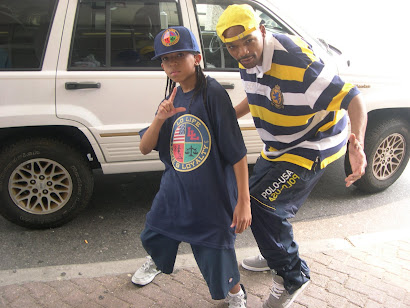
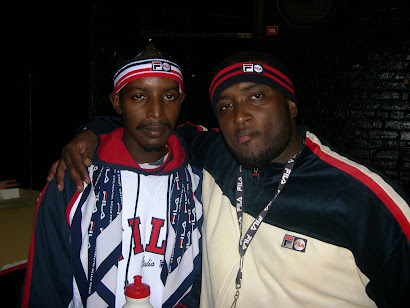
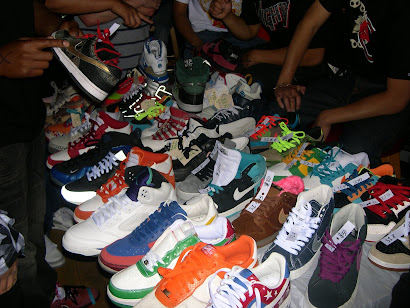
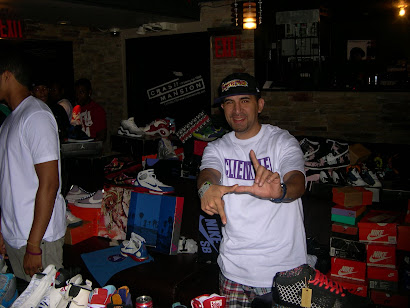
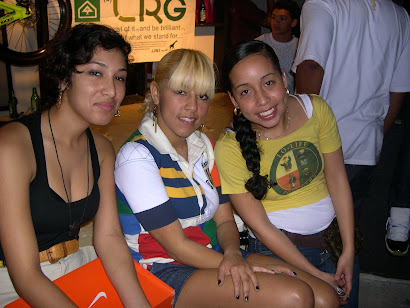
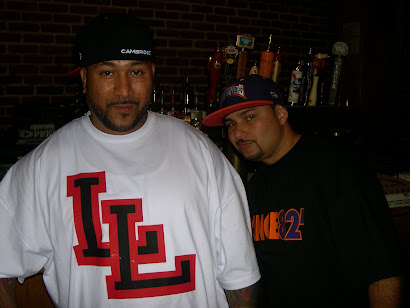
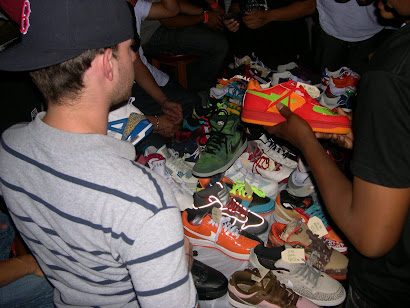
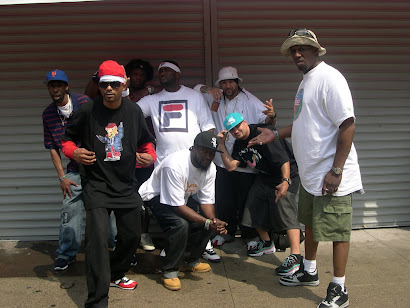
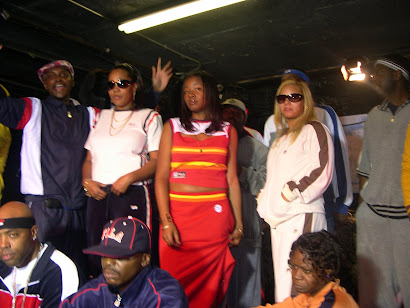
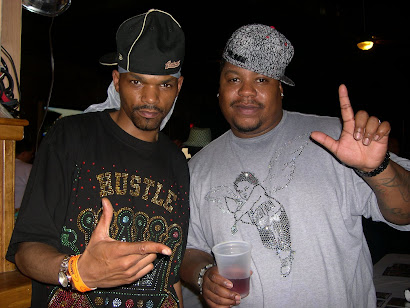









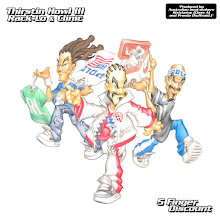
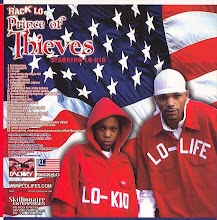

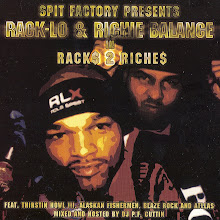
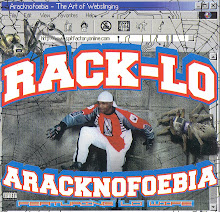

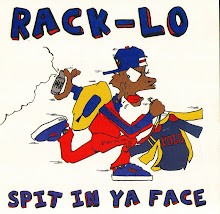
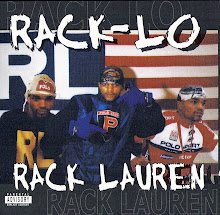

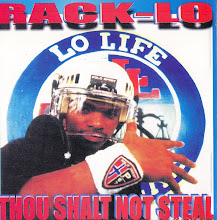


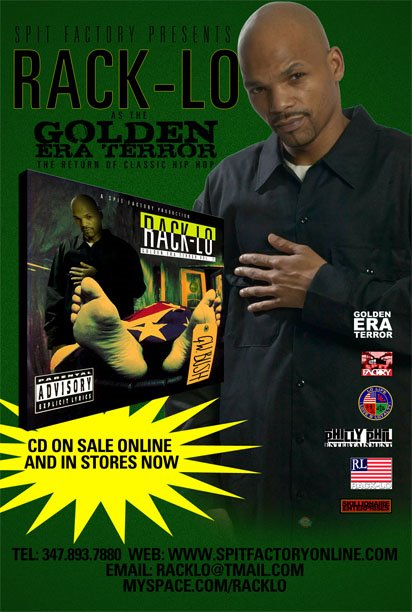





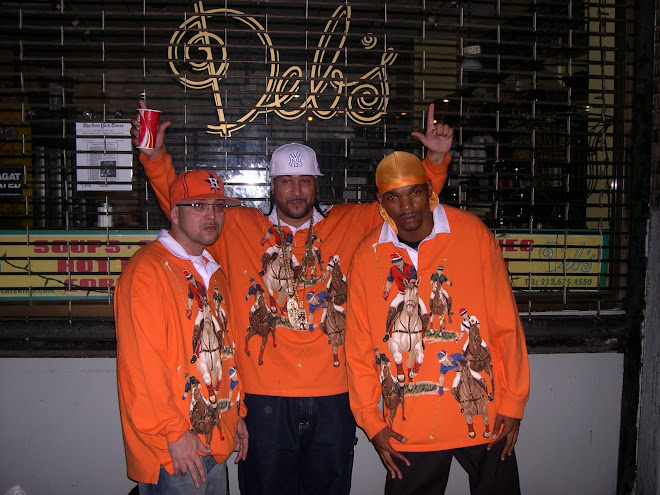
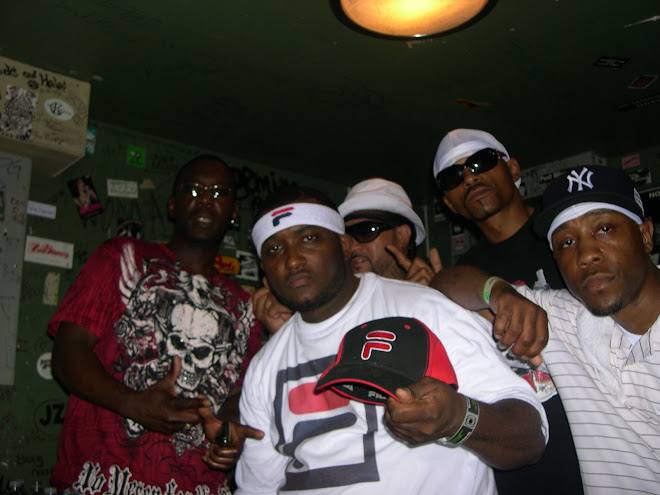
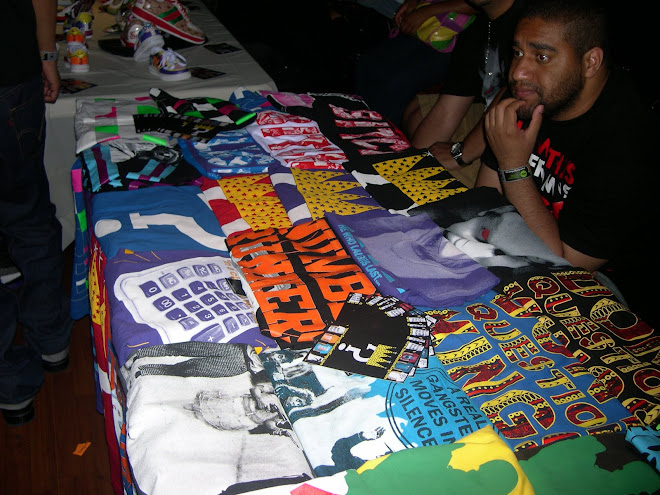
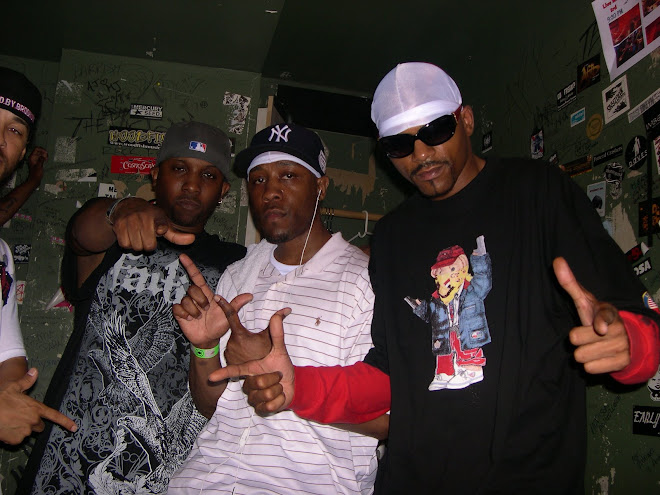
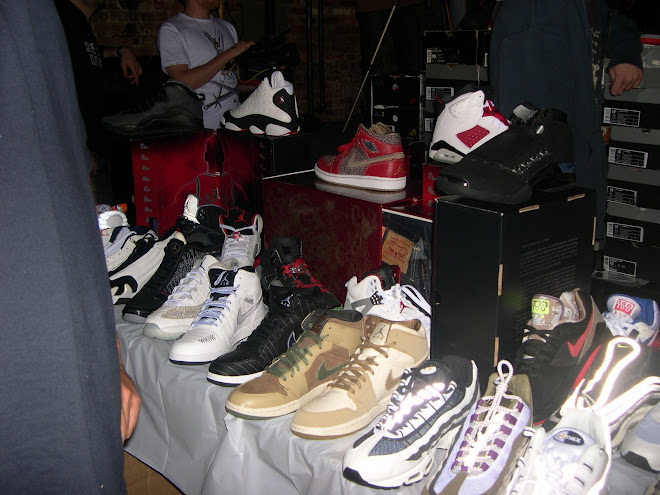
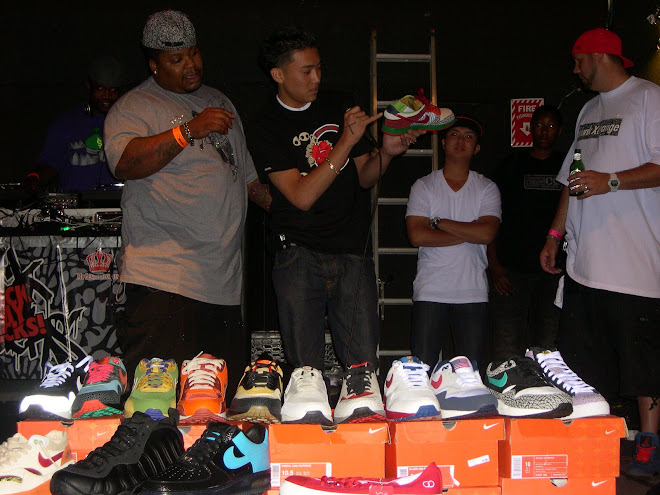
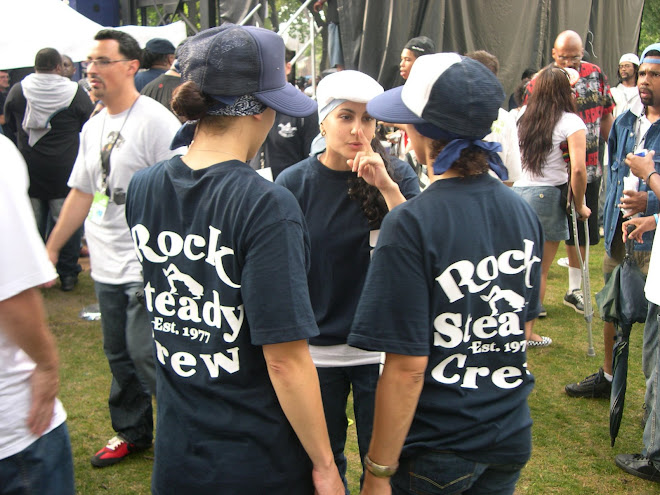
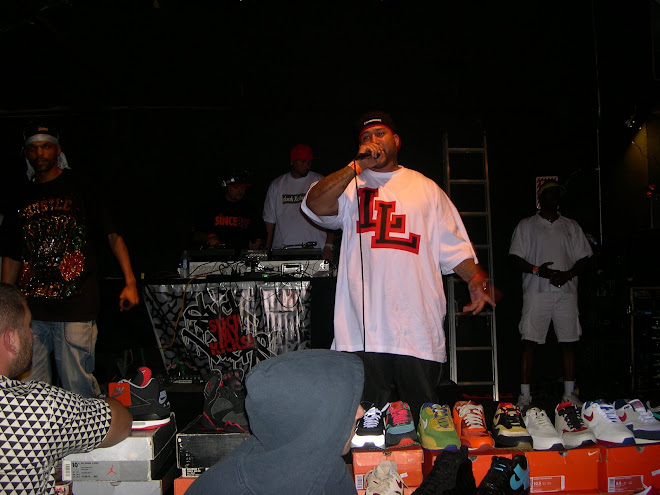
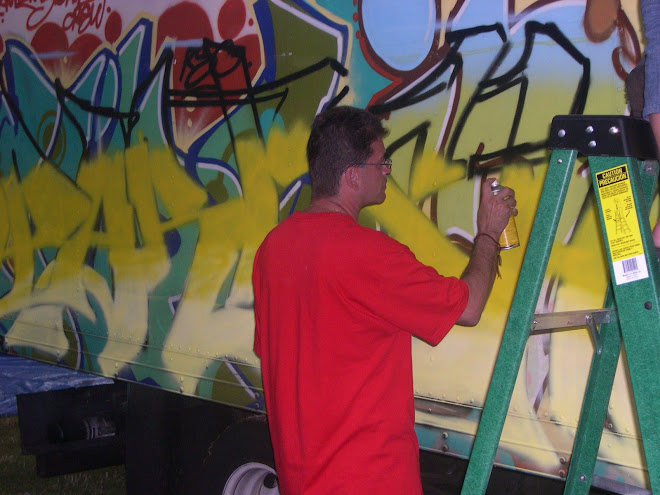
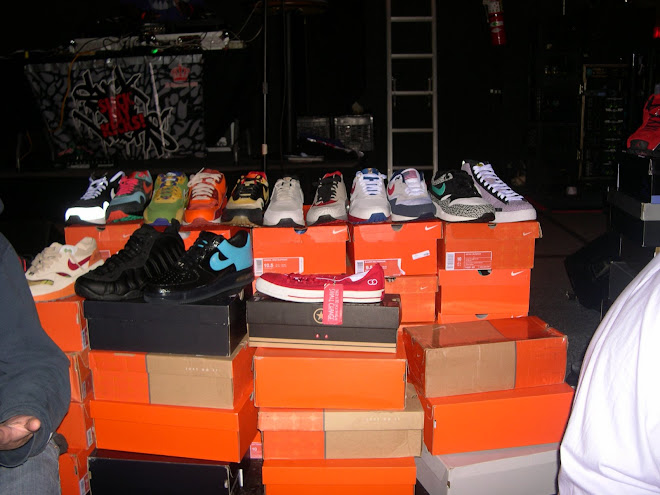

No comments:
Post a Comment